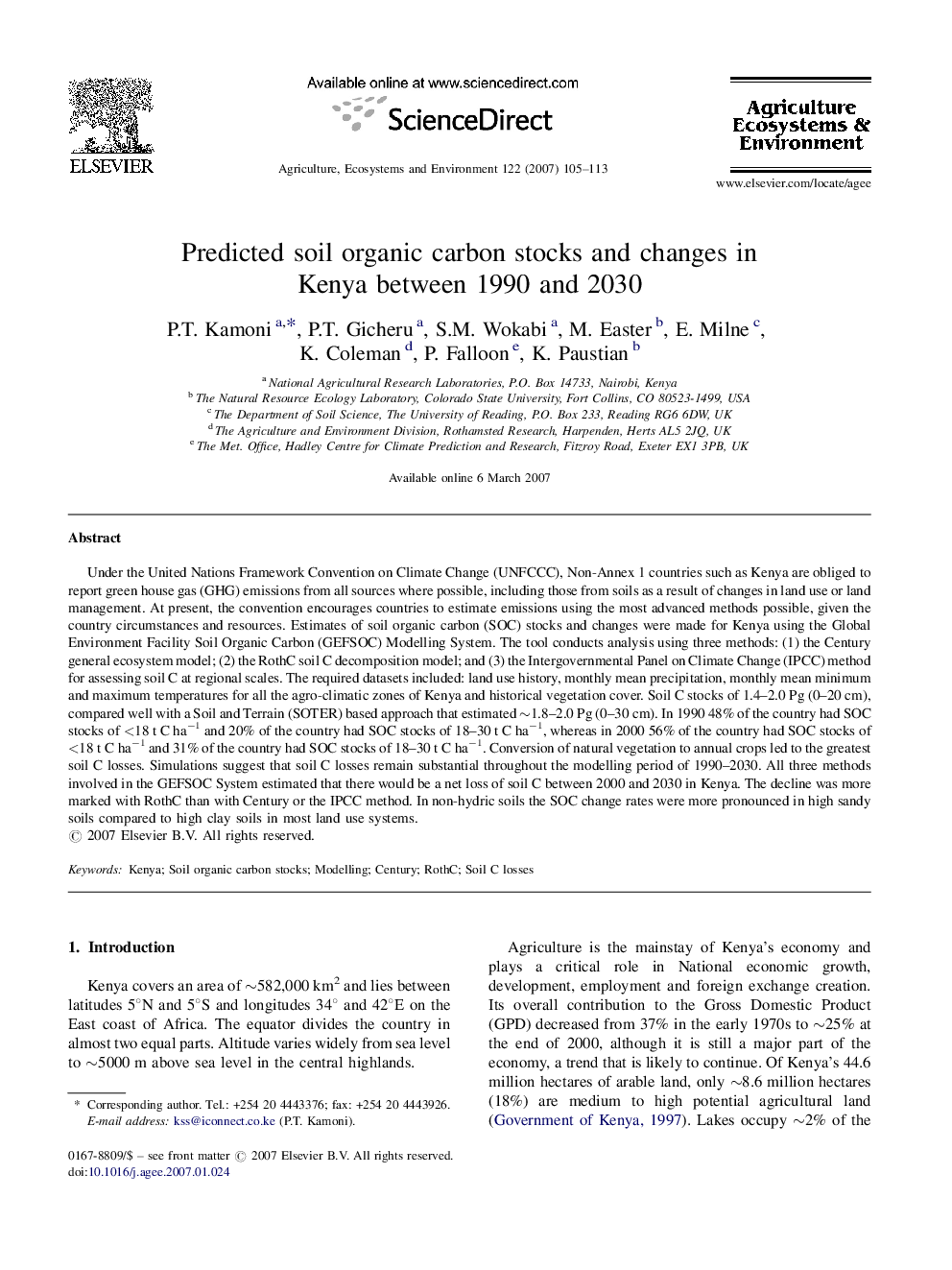| کد مقاله | کد نشریه | سال انتشار | مقاله انگلیسی | نسخه تمام متن |
|---|---|---|---|---|
| 2415554 | 1103966 | 2007 | 9 صفحه PDF | دانلود رایگان |

Under the United Nations Framework Convention on Climate Change (UNFCCC), Non-Annex 1 countries such as Kenya are obliged to report green house gas (GHG) emissions from all sources where possible, including those from soils as a result of changes in land use or land management. At present, the convention encourages countries to estimate emissions using the most advanced methods possible, given the country circumstances and resources. Estimates of soil organic carbon (SOC) stocks and changes were made for Kenya using the Global Environment Facility Soil Organic Carbon (GEFSOC) Modelling System. The tool conducts analysis using three methods: (1) the Century general ecosystem model; (2) the RothC soil C decomposition model; and (3) the Intergovernmental Panel on Climate Change (IPCC) method for assessing soil C at regional scales. The required datasets included: land use history, monthly mean precipitation, monthly mean minimum and maximum temperatures for all the agro-climatic zones of Kenya and historical vegetation cover. Soil C stocks of 1.4–2.0 Pg (0–20 cm), compared well with a Soil and Terrain (SOTER) based approach that estimated ∼1.8–2.0 Pg (0–30 cm). In 1990 48% of the country had SOC stocks of <18 t C ha−1 and 20% of the country had SOC stocks of 18–30 t C ha−1, whereas in 2000 56% of the country had SOC stocks of <18 t C ha−1 and 31% of the country had SOC stocks of 18–30 t C ha−1. Conversion of natural vegetation to annual crops led to the greatest soil C losses. Simulations suggest that soil C losses remain substantial throughout the modelling period of 1990–2030. All three methods involved in the GEFSOC System estimated that there would be a net loss of soil C between 2000 and 2030 in Kenya. The decline was more marked with RothC than with Century or the IPCC method. In non-hydric soils the SOC change rates were more pronounced in high sandy soils compared to high clay soils in most land use systems.
Journal: Agriculture, Ecosystems & Environment - Volume 122, Issue 1, September 2007, Pages 105–113